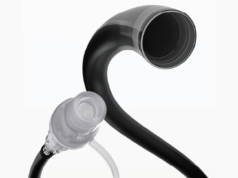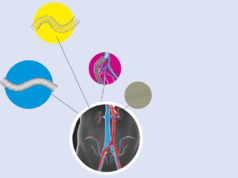The Heart and Vascular Outcomes Research Institute (HVORI) is collaborating with a number of medical centres to launch the iRetrieve study aimed to improve the retrieval rate of inferior vena cava (IVC) filters. John E Rectenwald, associate professor of Surgery, University of Michigan is the principal investigator for iRetrieve study, and the clinical trial is currently underway.
Until recently, IVC filters were available only as permanently implanted devices. Now, there are newer filters, that may be left in place permanently or have the option to be removed from the blood vessel later. Unlike permanent filters, retrievable filters have hooks or other structures that allow physicians to recapture and remove them from patients.
The iRetrieve study employs the IVC Filter Module which combines a novel retrieval algorithm with a pathway incorporated in the Venous Patient Outcome Registry that catalogues clinical outcomes for various treatments of deep and superficial venous diseases.
The IVC Filter Module will enable physicians to enter and track patients who receive a filter, the types of filters they are using, how frequently they are retrieving filters and any affiliated complications within the registry. Using the retrieval algorithm, each patient is assessed based on a multi-factorial analysis and a score will trigger a secure email and text message sent to both the physician and patient as a reminder to schedule a follow-up appointment or a procedure to retrieve the filter. Physicians will also be able to compare their patients’ outcome with the national aggregate.
“Retrievable IVC filters, although FDA-approved for permanent placement, are intended to be removed to limit potential long-term complications. They are designed specifically with the intention of being re-constrained and removed,” says Rectenwald. “Unfortunately, these designs and the materials used so that the filter can be retrieved, may predispose these filters to their own long-term complications, such as migration, and fracture if they are not removed.”
Improving retrieval rates and patient outcomes
In 2003, the first retrievable IVC filter was introduced in the USA, but it was taken off the market two years later due to complications with filter fracture and migration. Since then, improvements in the filter design have resolved problems of structural integrity and increased the ability to remove the filter after longer periods of time.
Retrievable filters are frequently made from a material called nitinol, which can fracture and cause potential complications. In August 2010, the US Food and Drug Administration (FDA) issued a communication advising physicians to remove retrievable filters whenever possible and updated that letter again in May 2014, due to concerns that these retrievable IVC filters, intended for short-term placement, are not always removed once a patient’s risk for pulmonary embolism subsides. Known long-term risks associated with IVC filters include lower limb deep vein thrombosis, filter fracture, filter migration, filter embolisation and IVC perforation.
Several studies have shown that approximately 80 to 85% of retrievable IVC filters are never retrieved. The successful removal of retrievable filters requires diligent patient follow-up and interdepartmental cooperation and even then, successful removal is not always accomplished.
The American College of Chest Physicians guidelines for IVC filter placement advocate for a close, structured follow-up of retrievable IVCFs to improve filter retrieval rates. Though some progress has been made, in order to achieve high retrieval rates hospitals and clinics may need a dedicated programme that closely monitors patients with retreivable IVC filters. Not every hospital or clinic has the resources available to implement a dedicated IVC Filter Clinic.
The predicted results from the iRetrieve study could alleviate that burden on hospitals and clinics, while improving patient outcomes.
“Physicians in the USA place an estimated 250,000 retrievable filters in patients annually. Using the algorithm we are testing in the iRetrieve study, we anticipate a retrieval rate of more than 90%, as the system will ensure a robust follow up for patients and also a reminder for physicians,” says Uchenna Onyeachom, director of Endovascular Research at HVORI and study director for iRetrieve. “The model also can eliminate the huge overhead cost incurred in the implementation of a dedicated IVC Filter Clinic.”
“I would like to commend John Rectenwald, Uchenna Onyeachom, the HVORI Institute, and the iRetrieve investigators for initiating this important study,” says William Kuo, director, Stanford IVC Filter Clinic. “Hopefully, their new module will help automate the process of tracking indwelling IVC filters so that more patients may benefit from prompt filter retrieval.”











